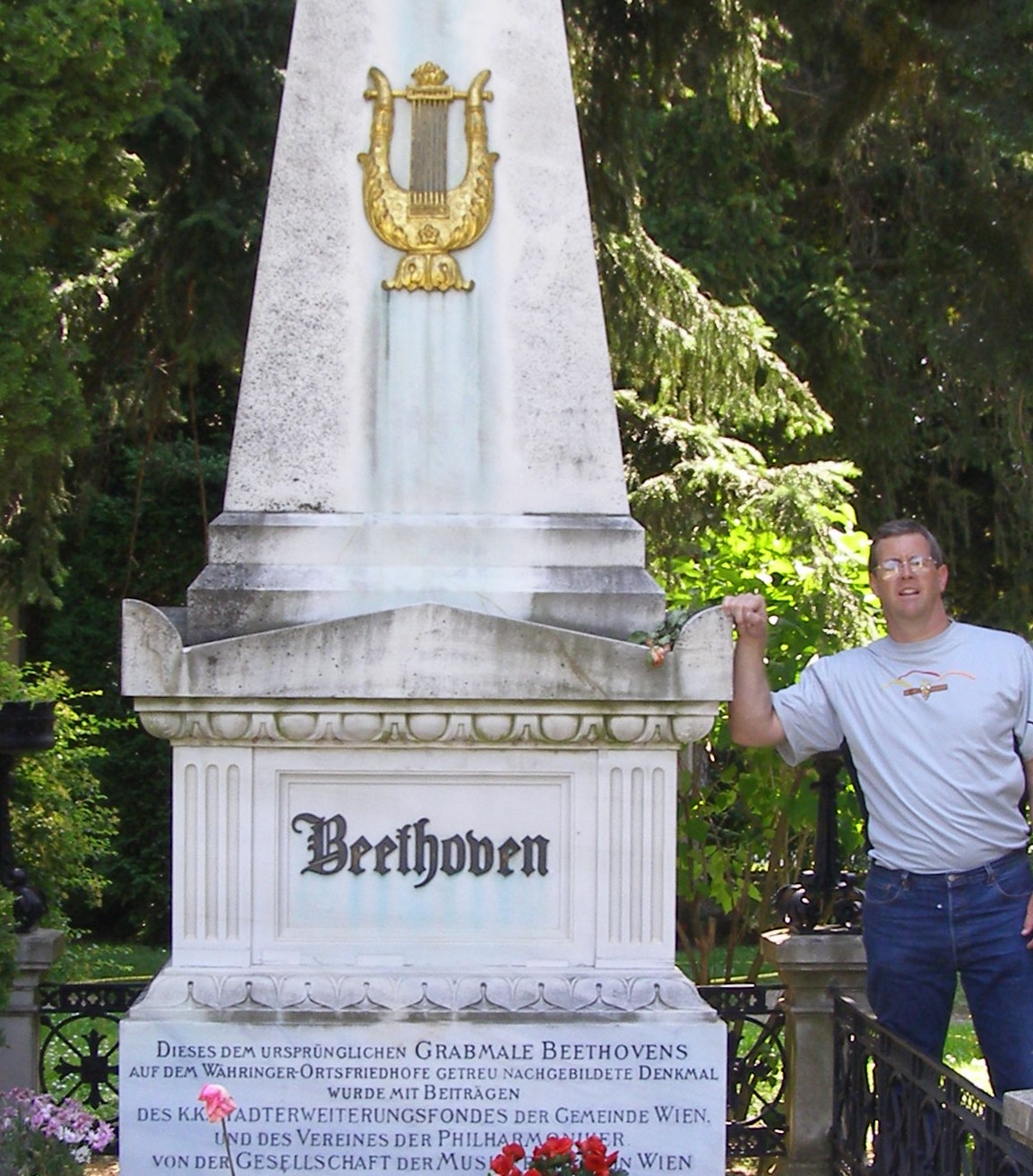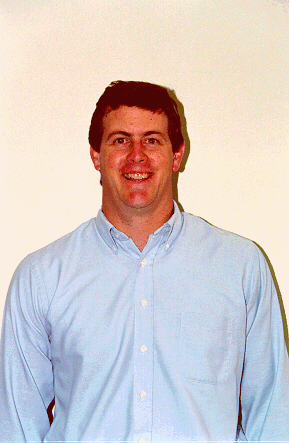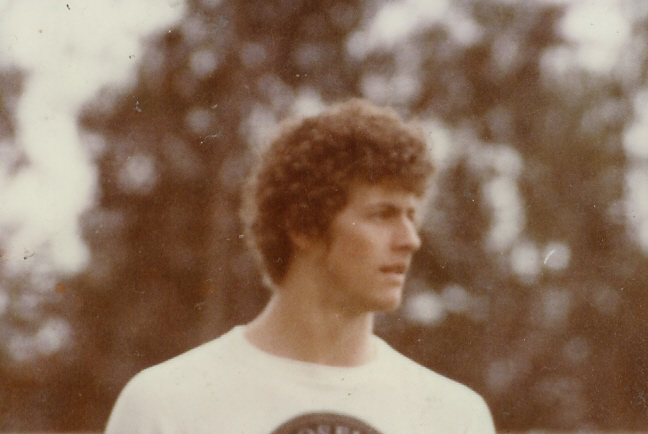John Crepeau, Ph.D., P.E.
Professor and Interim Dean
College of Engineering
University of Idaho
PO Box 441011
Moscow, Idaho 83844-1011
Tel: (208)885-5228
Fax: (208)885-9031
Email: crepeau@uidaho.edu


Left: Vienna, Austria, June 2006.
Right: The “mugshot,” circa 1996.
Crepeau
French (Crépeau): nickname for someone with curly hair, from a
derivative of the Latin crispus, “curly-haired.”
Dictionary of American Family Names, Oxford University Press
ISBN 0-19-508137-4

To
paraphrase the immortal David Letterman, “I can't believe they let me out
of the house looking like that.”
Research Highlights
![]() My colleague Ali Siahpush and I
described the effect that the internal (volumetric) heat generation has on the
movement and location of a solid-liquid phase change front. "Approximate
solutions to the Stefan problem with internal heat generation" was
published by the journal Heat and Mass Transfer. Computer
modeling subsequently confirmed these solutions.
The work performed in the two papers mentioned above led us to an
exact, analytical solution to the Stefan problem with internal heat generation.
My colleague Ali Siahpush and I
described the effect that the internal (volumetric) heat generation has on the
movement and location of a solid-liquid phase change front. "Approximate
solutions to the Stefan problem with internal heat generation" was
published by the journal Heat and Mass Transfer. Computer
modeling subsequently confirmed these solutions.
The work performed in the two papers mentioned above led us to an
exact, analytical solution to the Stefan problem with internal heat generation.
![]() Josef Stefan, despite being eponymous for the
Stefan-Boltzmann constant, the Stefan Number, the Stefan Problem, and the
Stefan current among other things, is not a well-known figure in the scientific
community at-large. This technical biography, "Josef
Stefan: His life and legacy in the thermal sciences", describes such
contributions as his empirical discovery of the T4 radiation law, which was later derived by his student
Ludwig Boltzmann, his first accurate measurements of the thermal conductivity
of gases, and his studies of ice formation on the polar caps. A less technical
version of the paper, "From
Rags to Research, the life of Josef Stefan", was published in bridges,
a publication of the Office of Science and Technology of the Austrian Embassy
of the United States. A paper describing his broad
contributions to heat transfer was given at the 2008 ASME Heat Transfer
Conference. At the 2009 ASME Heat Transfer Conference, I presented a paper describing a brief
history of the fourth power radiation law. Stefan also worked with Josef Loschmidt in Vienna.
An article describing their work can be found here.
Josef Stefan, despite being eponymous for the
Stefan-Boltzmann constant, the Stefan Number, the Stefan Problem, and the
Stefan current among other things, is not a well-known figure in the scientific
community at-large. This technical biography, "Josef
Stefan: His life and legacy in the thermal sciences", describes such
contributions as his empirical discovery of the T4 radiation law, which was later derived by his student
Ludwig Boltzmann, his first accurate measurements of the thermal conductivity
of gases, and his studies of ice formation on the polar caps. A less technical
version of the paper, "From
Rags to Research, the life of Josef Stefan", was published in bridges,
a publication of the Office of Science and Technology of the Austrian Embassy
of the United States. A paper describing his broad
contributions to heat transfer was given at the 2008 ASME Heat Transfer
Conference. At the 2009 ASME Heat Transfer Conference, I presented a paper describing a brief
history of the fourth power radiation law. Stefan also worked with Josef Loschmidt in Vienna.
An article describing their work can be found here.
![]() Under a
DOE-Nuclear Energy Research Initiative grant, Dr. Joy Rempe from the INL and I,
along with our colleagues investigated various materials to be used within
instrumentation devices for nuclear reactors. These included high
temperature, irradiation resistant thermocouples, extension wires
used in HTIR-TCs, and we measured thermal
expansion coefficients of steels used in light water reactors.
Under a
DOE-Nuclear Energy Research Initiative grant, Dr. Joy Rempe from the INL and I,
along with our colleagues investigated various materials to be used within
instrumentation devices for nuclear reactors. These included high
temperature, irradiation resistant thermocouples, extension wires
used in HTIR-TCs, and we measured thermal
expansion coefficients of steels used in light water reactors.
![]() Click on the thumbnail to see
a full size version of the image which won the 2002 Kodak Award from the
Visualization Society of Japan, and a brief synopsis of the phenomenon. The
paper, "Dye-bubble
interactions in an open channel flow", which describes the experiments
that produced the image, appeared in Heat and Mass Transfer.
Click on the thumbnail to see
a full size version of the image which won the 2002 Kodak Award from the
Visualization Society of Japan, and a brief synopsis of the phenomenon. The
paper, "Dye-bubble
interactions in an open channel flow", which describes the experiments
that produced the image, appeared in Heat and Mass Transfer.
![]() In studying the mechanics
of fluids in nuclear reactors, we developed a set of similarity equations for
buoyant flows driven by internal heat generation. What makes these similarity solutions unique is the exponentially
decaying heat generation term.
In studying the mechanics
of fluids in nuclear reactors, we developed a set of similarity equations for
buoyant flows driven by internal heat generation. What makes these similarity solutions unique is the exponentially
decaying heat generation term.
![]() After beginning at the University
of Idaho, I was asked by the Idaho National Laboratory to study the drying of
spent nuclear fuel. Some of our results were
published showing an efficient drying method.
After beginning at the University
of Idaho, I was asked by the Idaho National Laboratory to study the drying of
spent nuclear fuel. Some of our results were
published showing an efficient drying method.
For my graduate and postgraduate
studies I applied Powell and Percival's concept of the Spectral Entropy to
various systems in order to quantify their self-organization. The first paper used spectral entropy concepts
to analyze three dynamical systems, the second
used spectral entropy to analyze turbulent time series data, and the third was a comparison of spectral and
thermodynamic entropy.
My resumé.
The Department of Mechanical Engineering at the University of Idaho offers accredited Bachelor of Science, Masters of Science and Masters of Engineering, and Doctor of Philosophy degrees. For more information, visit the department website.
I have a number of ongoing research projects, including the melting and solidification phase change of materials with internal heat generation, development of high temperature thermocouples and nonlinear techniques to study the transition to turbulence. I am also interested in the History of Science.
If you have any questions, feel free to email me.